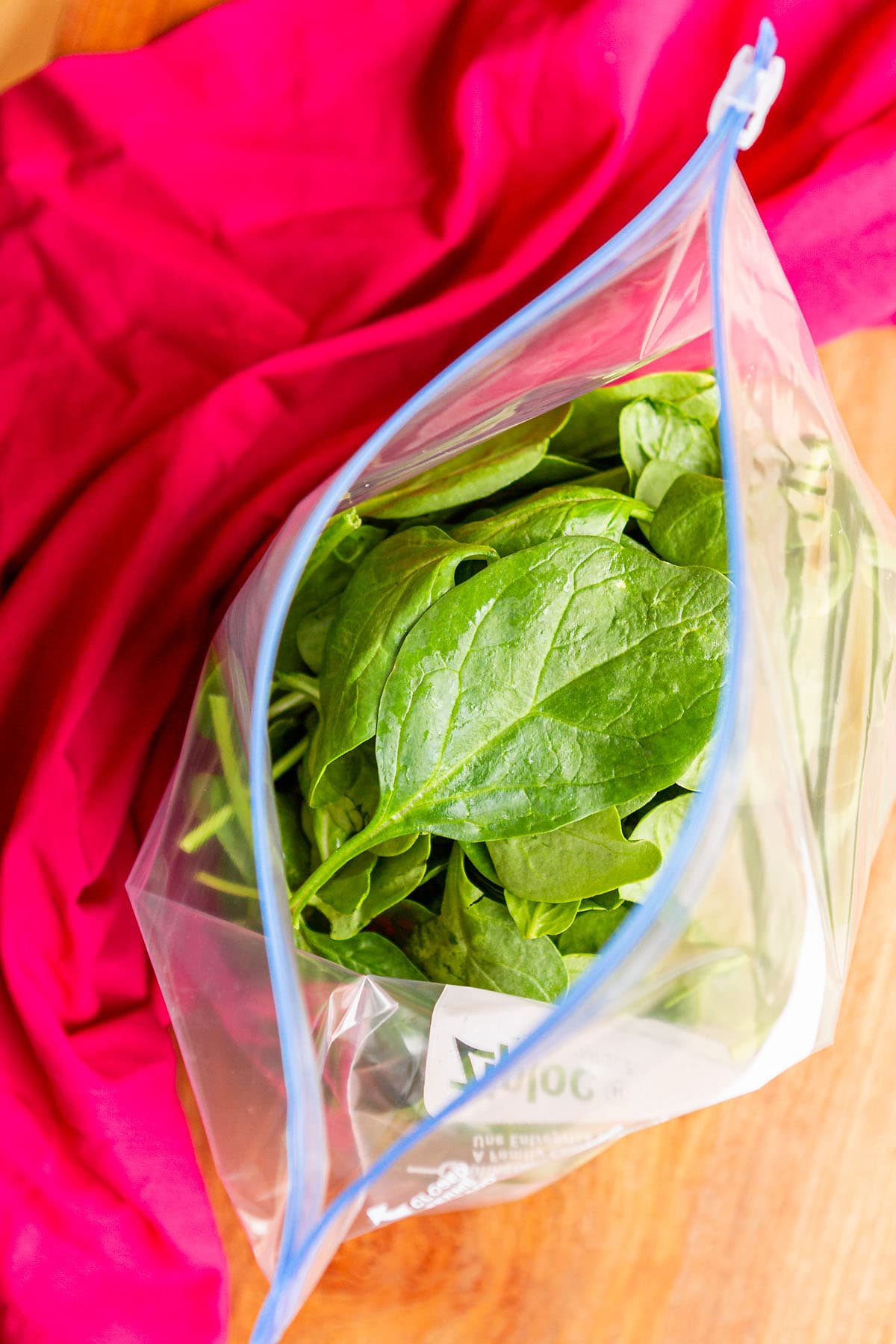

Articles
How To Store Bagged Spinach
Modified: February 23, 2024
Learn how to properly store bagged spinach to extend its freshness and shelf life with these helpful articles.
(Many of the links in this article redirect to a specific reviewed product. Your purchase of these products through affiliate links helps to generate commission for Storables.com, at no extra cost. Learn more)
Introduction
Welcome to the world of bagged spinach storage! If you’re someone who enjoys the convenience and nutritional benefits of bagged spinach, you know how important it is to store it properly to maintain its freshness and quality. Whether you’re a meal-prepper, a health-conscious individual, or simply a spinach enthusiast, understanding the best practices for storing bagged spinach can make a significant difference in prolonging its shelf life.
In this article, we will delve into the reasons why proper storage of bagged spinach is essential, as well as share some valuable tips to help you keep your greens fresh and vibrant for as long as possible.
So, let’s plunge into the world of bagged spinach storage and take a closer look at why it’s important and how to do it right!
Key Takeaways:
- Proper storage of bagged spinach is crucial to maintain its freshness, nutritional value, and quality. By following the recommended tips, you can extend the shelf life of bagged spinach, reduce food waste, and enjoy vibrant, flavorful greens for longer periods.
- Regularly checking for signs of spoilage is essential to ensure that you’re consuming fresh and safe bagged spinach. By being mindful of indicators such as sliminess, discoloration, and unusual odors, you can make informed decisions about the usability of your greens and prevent potential health concerns.
Read more: How To Store Washed Spinach
Why Proper Storage of Bagged Spinach is Important
Proper storage of bagged spinach is crucial for several reasons. The first and most obvious reason is to maintain its freshness. Spinach is a highly perishable leafy green vegetable that is prone to spoilage if not stored correctly. By following appropriate storage methods, you can extend the shelf life of your bagged spinach and ensure that it stays crisp, bright, and flavorful.
Another key reason for proper storage is to preserve the nutritional value of bagged spinach. Spinach is rich in essential vitamins, minerals, and antioxidants. However, exposure to unfavorable storage conditions can lead to nutrient degradation. By protecting your bagged spinach from factors like light, heat, and moisture, you can retain a significant portion of its nutritional benefits.
Additionally, proper storage of bagged spinach can help reduce food waste. When spinach is not stored correctly, it can quickly wilt, become slimy, or spoil, forcing you to throw it away. By implementing effective storage practices, you can reduce the chances of wasting this nutritious and delicious green and make the most out of your purchase.
Moreover, knowing how to store bagged spinach properly can save you money. When you store your greens well, you can buy them in bulk or take advantage of discounts without worrying about them going bad before you can use them up. By maximizing the shelf life of bagged spinach, you can make smart purchasing decisions and minimize the need for frequent trips to the grocery store.
Finally, proper storage ensures food safety. Poorly stored spinach can become a breeding ground for bacteria, leading to potential foodborne illnesses. By following proper storage guidelines, you can mitigate the risk of contamination and guarantee that your bagged spinach is safe to consume.
Now that we understand the importance of proper storage, let’s explore some valuable tips on how to store bagged spinach to maintain its freshness and nutrition.
Storage Tips for Bagged Spinach
To keep your bagged spinach fresh and vibrant, follow these storage tips:
- Choosing the Right Storage Location: Find a cool, dark, and dry place to store your bagged spinach. The ideal temperature for spinach storage is around 35°F to 40°F (1.7°C to 4.4°C). This could be the refrigerator or a cool pantry area.
- Keeping the Original Packaging Intact: Many bagged spinach products come in breathable plastic bags, designed to help maintain freshness. Keep the spinach in its original packaging until you’re ready to use it. Opening and resealing the bag repeatedly can introduce moisture and promote spoilage.
- Avoiding Exposure to Moisture: Moisture is the enemy of leafy greens. Make sure your bagged spinach stays dry by removing any excess moisture before storing. One way to do this is by gently patting the leaves dry with a paper towel before placing them in the refrigerator.
- Controlling Temperature and Humidity: Refrigerate your bagged spinach promptly after purchase. Ensure the refrigerator is set to the proper temperature and humidity levels. High humidity can contribute to faster spoilage, so consider storing your spinach in a crisper drawer with adjustable humidity settings if available.
- Proper Handling and Placement in the Refrigerator: Place your bagged spinach away from items that produce ethylene gas, such as fruits like apples and bananas. Ethylene can accelerate the spoilage process. Store your spinach away from the refrigerator door as well, as it experiences more temperature fluctuations.
- Using Storage Containers or Bags: If you’ve removed the spinach from its original packaging and wish to store it in a different container, choose a breathable one. Opt for a container with air vents or use a partially opened plastic bag to allow some airflow while minimizing moisture accumulation.
- Storing Bagged Spinach for Longer Durations: If you want to extend the shelf life of bagged spinach, consider blanching and freezing it. Blanching involves quickly boiling the spinach and then plunging it into ice water to stop the cooking process. Once blanched, transfer the spinach to freezer-safe bags or containers for long-term storage.
- Checking for Signs of Spoilage: Before using your bagged spinach, always inspect it for any signs of spoilage, such as sliminess, discoloration, or a foul odor. If you encounter any of these signs, discard the spinach immediately.
By implementing these storage tips, you can enjoy fresh and nutritious bagged spinach for a longer period, minimizing waste and optimizing its taste and texture.
Choosing the Right Storage Location
When it comes to storing bagged spinach, selecting the proper storage location is essential to maintaining its freshness and quality. Here are some considerations to keep in mind:
a) Temperature: Bagged spinach thrives in cooler temperatures. Aim for a storage location with a temperature range of 35°F to 40°F (1.7°C to 4.4°C). This temperature range helps to slow down the decay process and keep the spinach crisp and fresh.
If you have a refrigerator, storing bagged spinach in the vegetable crisper drawer is ideal. The crisper drawer allows you to adjust the humidity levels, providing a controlled environment for your greens.
If you don’t have access to a refrigerator, look for a cool, dark area in your home that maintains a fairly consistent temperature. Avoid storing bagged spinach near appliances or areas that generate heat, such as the stovetop or oven.
b) Light: Just like other leafy greens, bagged spinach is sensitive to light. Exposure to light can cause the leaves to turn yellow and deteriorate quickly. Choose a storage location that is dark or minimizes light exposure to preserve the vibrant green color and nutritional value of your spinach.
c) Air Circulation: While proper air circulation is important for maintaining freshness, bagged spinach should not be exposed to excessive airflow. Too much air can cause the leaves to dry out and wilt. Look for a storage location that provides a moderate level of air circulation without subjecting the spinach to drafts or strong air currents.
Considering these factors, a refrigerator with a controlled humidity drawer is generally the most suitable storage location for bagged spinach. It provides optimal temperature control, minimizes light exposure, and offers a balanced amount of air circulation.
Remember, maintaining the right storage location ensures that your bagged spinach stays fresh and nutritious for longer durations, allowing you to enjoy this leafy green vegetable to its fullest!
Keeping the Original Packaging Intact
When it comes to storing bagged spinach, one of the easiest and most effective ways to maintain its freshness is by keeping the original packaging intact. Many bagged spinach products come in specially designed bags that provide the right balance of airflow and moisture control.
a) Breathable Packaging: Bagged spinach is typically packaged in breathable plastic bags. These bags are specifically designed to allow a certain amount of airflow while retaining moisture. The breathable packaging helps prolong the shelf life of the spinach by preventing excess moisture buildup, which can lead to spoilage.
b) Protection from External Factors: The original packaging acts as a barrier, protecting the bagged spinach from external factors that can negatively impact its quality. It shields the greens from light exposure, which can cause the leaves to turn yellow and lose their nutritional value. Additionally, the packaging helps to prevent the transfer of odors and flavors from other foods in the refrigerator.
c) Minimizing Handling: Opening and resealing the bag repeatedly exposes the spinach to air and can introduce moisture, accelerating spoilage. By leaving the spinach in its original packaging until you’re ready to use it, you minimize unnecessary handling that can lead to deterioration.
If you need to open the bag to use a portion of the spinach, try to reseal it as tightly as possible. Squeeze out any excess air before sealing the bag and consider using a bag clip or twist tie to secure it. By reducing air exposure and maintaining a sealed bag, you can prolong the freshness of the remaining spinach.
If the original packaging becomes damaged or torn, consider transferring the bagged spinach to a new breathable container or using a partially opened plastic bag to maintain some airflow while protecting the greens.
Remember, keeping the original packaging intact is an easy and practical way to preserve the freshness and quality of your bagged spinach. By doing so, you can enjoy crisp, flavorful greens for longer periods.
Read more: How To Store Fresh Spinach
Avoiding Exposure to Moisture
When it comes to storing bagged spinach, it is crucial to avoid exposure to moisture as much as possible. Excess moisture can cause the leaves to wilt, become slimy, and promote the growth of bacteria, leading to spoilage. Here are some tips to help you prevent moisture buildup:
a) Dry the Leaves: Before storing your bagged spinach, make sure to remove any excess moisture from the leaves. Gently pat them dry with a clean paper towel or use a salad spinner to remove water droplets. Excess moisture on the leaves can contribute to the growth of bacteria and quicken the decay process.
b) Properly Seal the Bag: When storing bagged spinach, ensure that the original packaging is tightly sealed or resealable after each use. This helps to maintain the moisture levels within the bag and prevents any additional moisture from seeping in. Squeeze out as much air as possible before sealing the bag to minimize the potential for condensation.
c) Avoid Washing Before Storage: It’s best to avoid washing bagged spinach before storing it. Washing the leaves introduces moisture, and storing wet spinach can accelerate spoilage. It’s recommended to wash the spinach just before use instead.
d) Store Away from Moisture Sources: When storing bagged spinach, keep it away from areas of your kitchen that generate moisture, such as sinks, dishwashers, or steam-producing appliances. Moisture in the air can easily condense on the leaves and lead to faster deterioration.
e) Do Not Store in a Plastic Bag: While the original bag is breathable, storing bagged spinach in a regular plastic bag can trap moisture and promote spoilage. If you need to transfer the spinach to a different container, opt for a breathable one or partially open a regular plastic bag to allow some airflow.
By taking these precautions and avoiding exposure to moisture, you can significantly extend the shelf life of your bagged spinach. Keeping the leaves dry and protected helps maintain their crispness, freshness, and nutritional value.
Store bagged spinach in the refrigerator crisper drawer, unwashed and in its original packaging or a resealable plastic bag with a paper towel to absorb excess moisture. This will help keep it fresh for longer.
Controlling Temperature and Humidity
Controlling temperature and humidity is crucial when it comes to storing bagged spinach. Maintaining the right conditions can help extend its shelf life and preserve its quality. Here are some tips on how to control temperature and humidity:
a) Refrigerate Promptly: Bagged spinach should be refrigerated as soon as possible after purchase. The cool temperature of the refrigerator helps slow down the natural deterioration process and keeps the leaves crisp. Aim to refrigerate within two hours of bringing the spinach home.
b) Set the Right Temperature: The ideal temperature range for storing bagged spinach is between 35°F and 40°F (1.7°C to 4.4°C). Adjust your refrigerator’s temperature settings to maintain this range. Avoid storing the spinach in the warmer areas of the refrigerator, such as the door or the top shelf.
c) Manage Humidity: High humidity levels can cause excess moisture and promote spoilage. Most refrigerators have separate compartments with adjustable humidity settings. Place your bagged spinach in the vegetable crisper drawer and adjust the humidity control to a moderate level. This creates a controlled environment that helps keep the leaves fresh without becoming too dry or too damp.
d) Avoid Temperature Fluctuations: Rapid temperature changes can affect the quality of bagged spinach. Refrigerator doors are often subject to frequent temperature fluctuations when opened. Store your bagged spinach away from the door to minimize exposure to these fluctuations. It’s best to choose a more stable location.
e) Check the Refrigerator’s Performance: Regularly monitor and maintain your refrigerator’s temperature and humidity settings. Ensure that the refrigerator is working properly and that the temperature remains consistent. If you notice any issues, such as inconsistent cooling or excess moisture buildup, consider getting your refrigerator serviced or investing in a dedicated refrigerator thermometer to keep accurate track of the temperature.
By controlling temperature and humidity, you can create an environment that helps preserve the freshness and crispness of your bagged spinach. The right conditions will contribute to longer shelf life and ensure your greens remain vibrant and tasty.
Proper Handling and Placement in the Refrigerator
Proper handling and placement of your bagged spinach in the refrigerator are essential to maintain its freshness and quality. Here are some tips to ensure you handle and place your bagged spinach correctly:
a) Handle with Care: When handling bagged spinach, be gentle to prevent the leaves from bruising or wilting. Rough handling can damage the delicate leaves and accelerate spoilage. Avoid squeezing or compressing the bag, as this can crush the leaves.
b) Place Away from Ethylene-Producing Foods: Some fruits, such as apples, bananas, and avocados, produce a natural gas called ethylene. This gas can speed up the ripening process and cause the bagged spinach to deteriorate more quickly. Store your bagged spinach away from ethylene-producing fruits to prevent premature spoilage.
c) Choose a Proper Shelf: Select the right shelf in your refrigerator for storing bagged spinach. The ideal location is the vegetable crisper drawer, which offers a controlled environment with adjustable humidity levels. If your refrigerator doesn’t have a designated crisper drawer, choose a lower shelf towards the back where the temperature is the most consistent.
d) Separate from Raw Meat and Seafood: It’s crucial to keep bagged spinach separate from raw meat and seafood to avoid cross-contamination. Store it on a different shelf or, if possible, in a different compartment of your refrigerator. This reduces the risk of harmful bacteria spreading to the spinach.
e) Avoid Overcrowding: Overcrowding the refrigerator can restrict airflow and lead to uneven temperatures and moisture buildup. Make sure not to cram too many items around your bagged spinach. Leave some space to allow proper air circulation and maintain consistent temperature and humidity levels.
f) Minimize Opening and Closing: Each time you open the refrigerator door, warm air enters, causing temperature fluctuations. Minimize the number of times you open and close the refrigerator door, especially if you live in a hot and humid climate. This helps maintain a stable environment for your bagged spinach.
By following these proper handling and placement tips, you can ensure that your bagged spinach retains its freshness, vibrant color, and nutritional value for a longer period. Treat your greens gently and give them the optimal refrigerated environment they deserve!
Using Storage Containers or Bags
Using the right storage containers or bags for your bagged spinach can help maintain its freshness and prevent moisture buildup. Here are some tips to effectively store your bagged spinach:
a) Choose Breathable Containers: If you prefer to transfer your bagged spinach to a different container or bag, opt for a breathable option. Look for containers with air vents or lids that allow some airflow. Avoid using airtight containers as they can trap moisture and lead to faster spoilage.
b) Partially Opened Plastic Bags: Another option is to partially open a regular plastic bag and place your bagged spinach inside. This method allows for some airflow while still providing protection. Ensure not to seal the bag completely to prevent excess moisture accumulation.
c) Properly Size the Container: Choose a container that is appropriately sized for your bagged spinach. Using a container that is too large can cause the leaves to move around and bruise. On the other hand, a container that is too small can compress the leaves, accelerating spoilage. Find a container that allows the spinach to retain its shape and minimize any unnecessary movement.
d) Store in Portion-Sized Bags: If you prefer to portion out your bagged spinach for convenience, consider using smaller bags to store individual servings. This way, you can take out only what you need without exposing the entire batch to air and moisture.
e) Label and Date: If you choose to transfer your bagged spinach to a different container or bag, make sure to label it with the date of purchase or the day it was prepared. This helps you keep track of its freshness and use it in a timely manner.
f) Properly Seal the Container: When using storage containers, make sure to seal them tightly to avoid air and moisture intrusion. Check that lids or covers are securely in place to maintain the desired storage environment.
g) Keep Containers Dry: Before putting your bagged spinach into a container, ensure that both the container and the spinach are dry. Excess moisture from condensation or wet containers can lead to spoilage. Wipe off any moisture from the container and make sure the spinach is dry before transferring it.
By using the right storage containers or bags, you can help maintain the freshness and quality of your bagged spinach. Properly chosen and sealed containers keep the spinach protected while allowing for some airflow, reducing moisture buildup and extending its shelf life.
Read more: How To Store Baby Spinach
Storing Bagged Spinach for Longer Durations
If you want to extend the shelf life of your bagged spinach and store it for longer durations, consider the following tips:
a) Blanch and Freeze: Blanching and freezing bagged spinach is an excellent way to preserve its freshness for an extended period. Blanching involves quickly boiling the spinach for a short time and then transferring it to an ice bath to stop the cooking process. Blanching helps retain the color, texture, and nutritional value of the spinach. Once blanched, pat the spinach dry, portion it into freezer-safe bags, and remove as much air as possible before sealing. Place the bags in the freezer and label them with the date for easy reference.
b) Frozen Spinach Storage: If you have purchased frozen bagged spinach, be sure to store it in the freezer as soon as you bring it home. Keep it tightly sealed in its original packaging, or transfer it to an airtight freezer bag to prevent freezer burn. Frozen bagged spinach can last for several months when properly stored.
c) Thawing Frozen Spinach: When you’re ready to use frozen bagged spinach, thaw it in the refrigerator overnight or by placing the bag in a bowl of cold water. Avoid thawing it at room temperature, as it may lead to faster spoilage. Once thawed, squeeze out any excess moisture before using it in your recipes.
d) Freeze in Individual Servings: If you prefer to have portioned servings of spinach readily available, consider freezing bagged spinach in individual portions. Divide the spinach into smaller portions, place each portion in a separate freezer bag, and seal them tightly. This allows you to take out only what you need without thawing the entire bundle.
e) Keep a Freezer Inventory: To keep track of your frozen bagged spinach and prevent food waste, maintain a freezer inventory. Label each bag with the date and quantity of spinach inside to ensure you use the oldest ones first. Regularly check and update your freezer inventory so that you’re aware of what you have on hand.
f) Note Freezer Storage Duration: While frozen bagged spinach can last for a long time, it’s important to note that the quality may deteriorate over time. Consult the recommended storage duration for frozen vegetables and try to consume the spinach within that timeframe for the best taste and texture.
By blanching and freezing bagged spinach or properly storing the frozen variety, you can enjoy the convenience of having spinach readily available at any time while minimizing waste. Freezing allows you to enjoy its nutritional benefits long after the fresh spinach season has ended.
Checking for Signs of Spoilage
Regularly checking your bagged spinach for signs of spoilage is essential to ensure that you’re consuming fresh and safe greens. Here are some key indicators to look out for:
a) Sliminess: One of the first signs of spoilage in bagged spinach is sliminess. If you notice a slimy texture or a sticky residue on the leaves, it’s a clear indication that the spinach has started to deteriorate. Discard any bagged spinach that appears slimy, as it may harbor harmful bacteria.
b) Discoloration: Fresh bagged spinach should have vibrant, deep green leaves. If you notice any yellowing, browning, or significant discoloration, it’s a sign that the spinach is no longer fresh and has begun to deteriorate. Discolored spots or patches can be an indication of decay, so it’s best to discard spinach showing these signs.
c) Foul Odor: Fresh bagged spinach should have a mild, earthy smell. If you detect any unpleasant or foul odor, it’s a clear sign of spoilage. The smell can range from ammonia-like to rotten or sour. Trust your senses, and if the spinach emits an off-putting odor, it’s best to dispose of it.
d) Slimy or Moldy Spots: Inspect the leaves for any slimy or moldy spots. Mold can develop on bagged spinach if it’s not stored properly or if it has already started to spoil. Mold growth is a strong indication of decay and poses a health risk, so discard any spinach showing signs of mold.
e) Wilting: Fresh bagged spinach should have crisp, firm leaves. If the leaves appear wilted, limp, or excessively droopy, it suggests that the spinach is past its prime. While slightly wilted leaves can still be safe to consume, excessively wilted leaves may indicate spoilage.
f) Excessive Water Accumulation: Check for excessive water accumulation inside the bag. If you notice pools of water or excessive condensation, it’s a sign of excess moisture, which encourages bacterial growth. Properly patting the leaves dry before storage and avoiding high humidity environments can help prevent this issue.
g) Unusual Taste: If you detect an unusual or off taste when consuming bagged spinach, it could be an indication of spoilage. Fresh spinach should have a mild, slightly sweet flavor. If the taste is bitter, sour, or unpleasant, it’s best to stop consuming it and discard the remaining portion.
Remember, if you notice any of the signs mentioned above, it’s important to discard the bagged spinach to ensure your safety and well-being. Don’t take any chances with spoiled or contaminated greens.
By regularly checking for signs of spoilage, you can ensure that your bagged spinach remains fresh, safe, and enjoyable to consume. Keeping a close eye on its condition will help you make informed decisions about its usability and prevent any potential health concerns.
Conclusion
Proper storage of bagged spinach is essential to maintain its freshness, nutritional value, and overall quality. By following the tips mentioned in this article, you can ensure that your bagged spinach remains vibrant, crisp, and delicious for as long as possible.
Choosing the right storage location, such as a cool and dark area or a vegetable crisper drawer in your refrigerator, helps create an optimal environment for your bagged spinach. Keeping the original packaging intact, or using breathable containers or bags, minimizes moisture buildup and protects the spinach from external factors.
Avoiding exposure to moisture, controlling temperature and humidity, proper handling and placement in the refrigerator, and storing bagged spinach for longer durations through blanching and freezing are all effective methods to extend its shelf life and prevent spoilage.
Additionally, regularly checking for signs of spoilage, such as sliminess, discoloration, foul odor, or wilting, is crucial to ensure that you’re consuming fresh and safe bagged spinach.
By implementing these storage tips, you can maximize the nutritional benefits, reduce food waste, and save money by prolonging the shelf life of your bagged spinach. Whether you’re using it in salads, smoothies, stir-fries, or other recipes, properly stored bagged spinach will enhance your meals with its vibrant flavor and health benefits.
Remember, fresh and nutritious bagged spinach is just a proper storage away. Embrace these storage tips, make them a part of your routine, and enjoy vibrant and flavorful bagged spinach whenever you desire!
Frequently Asked Questions about How To Store Bagged Spinach
Was this page helpful?
At Storables.com, we guarantee accurate and reliable information. Our content, validated by Expert Board Contributors, is crafted following stringent Editorial Policies. We're committed to providing you with well-researched, expert-backed insights for all your informational needs.

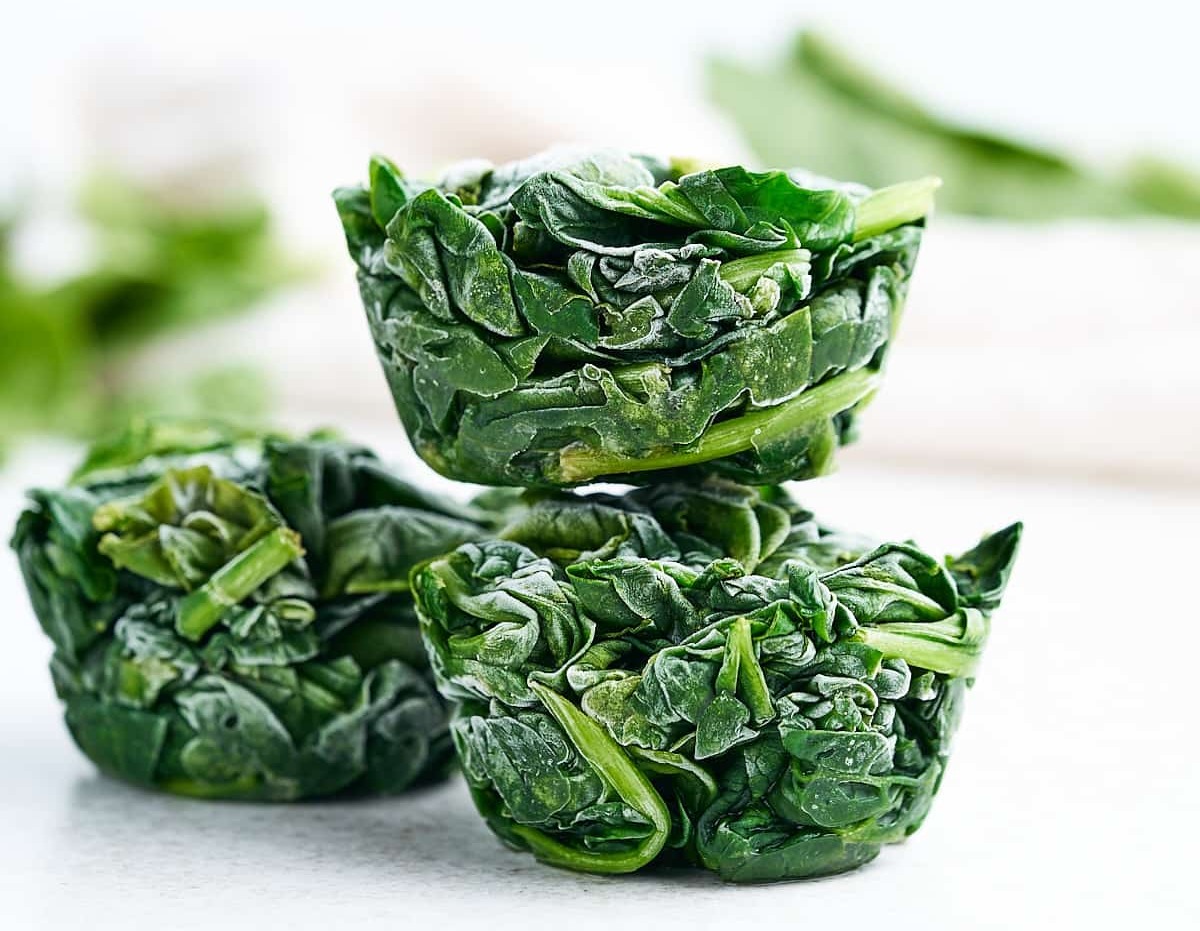
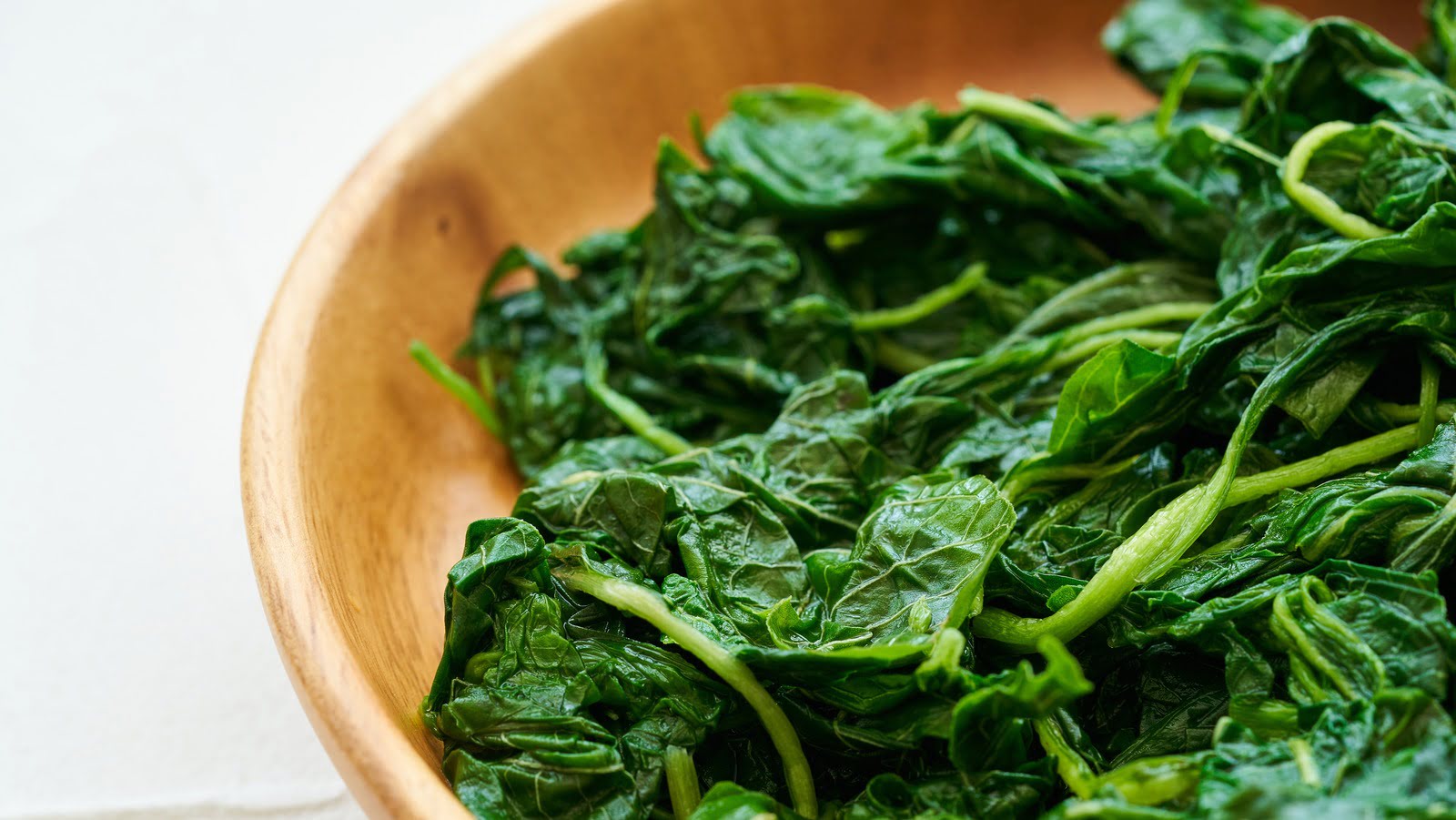

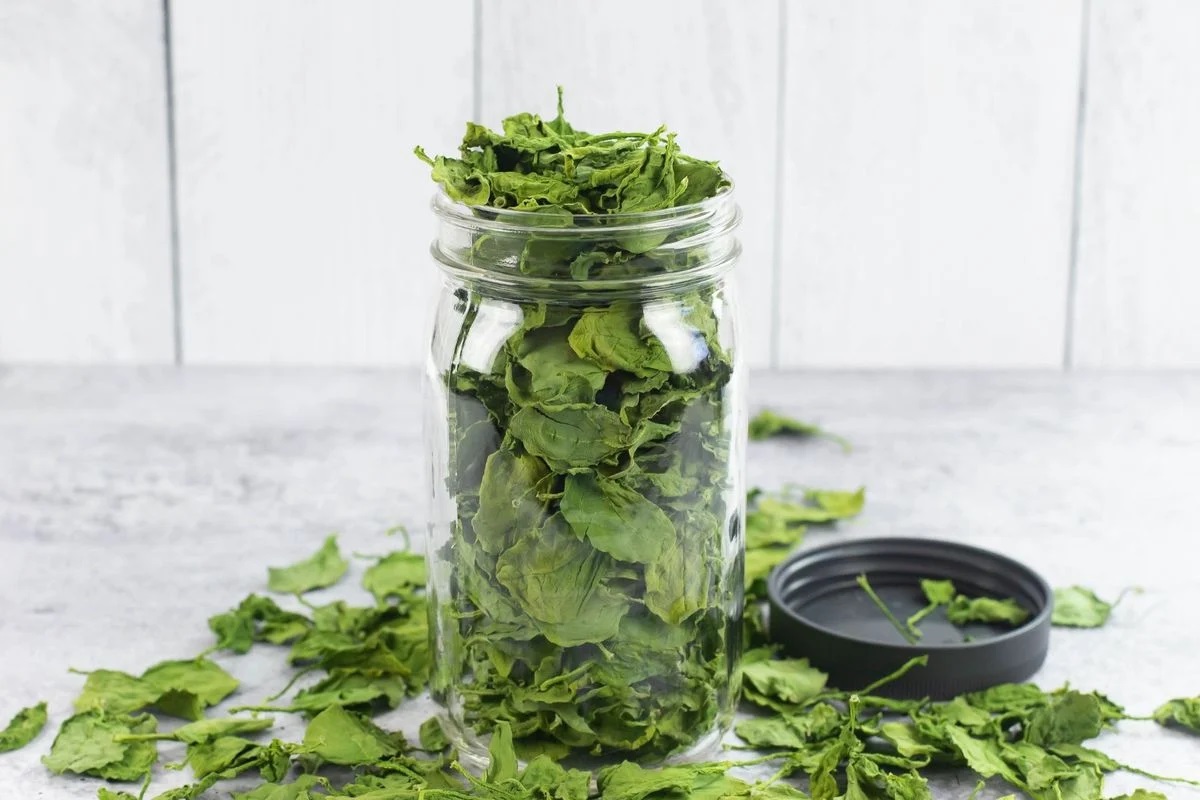
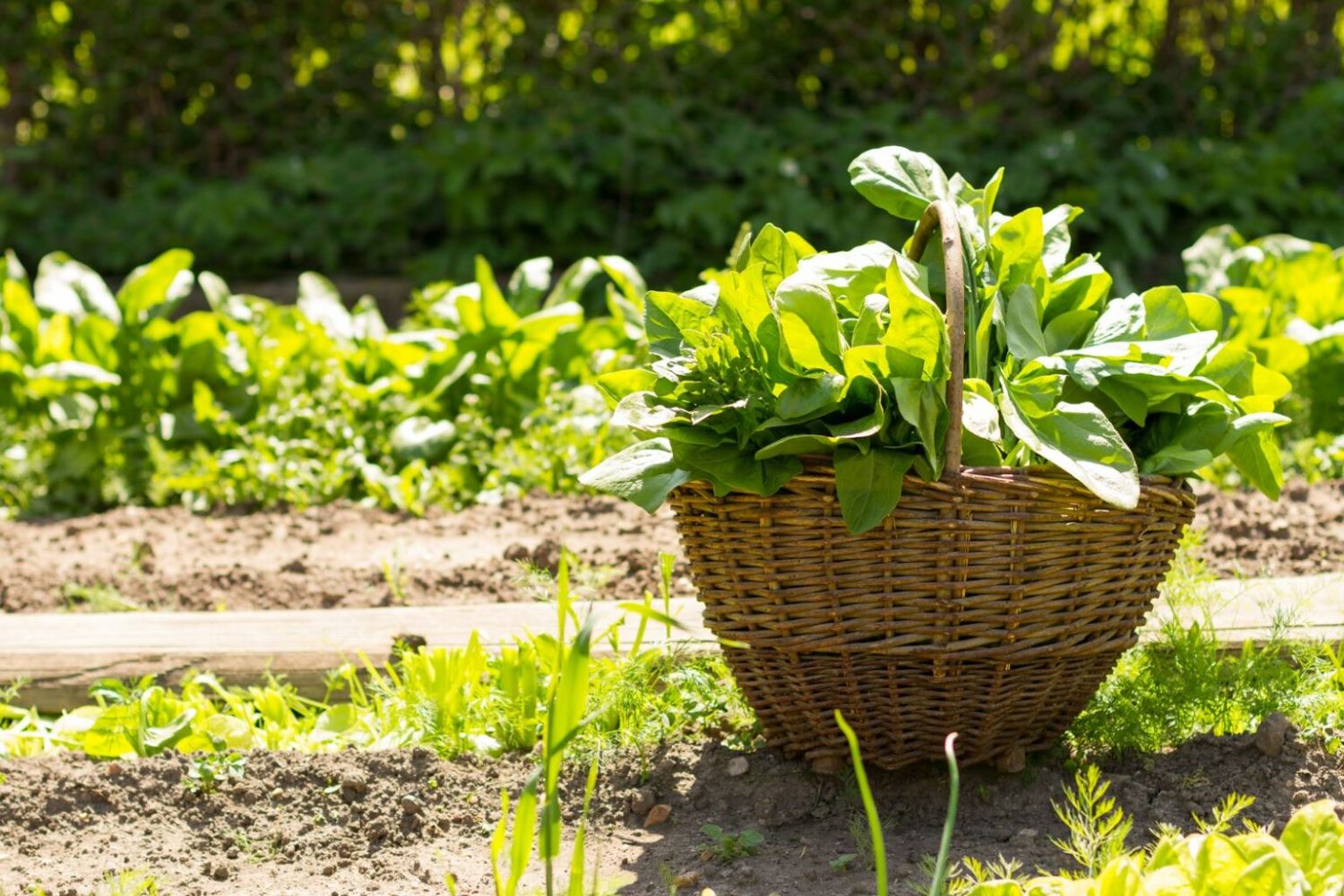




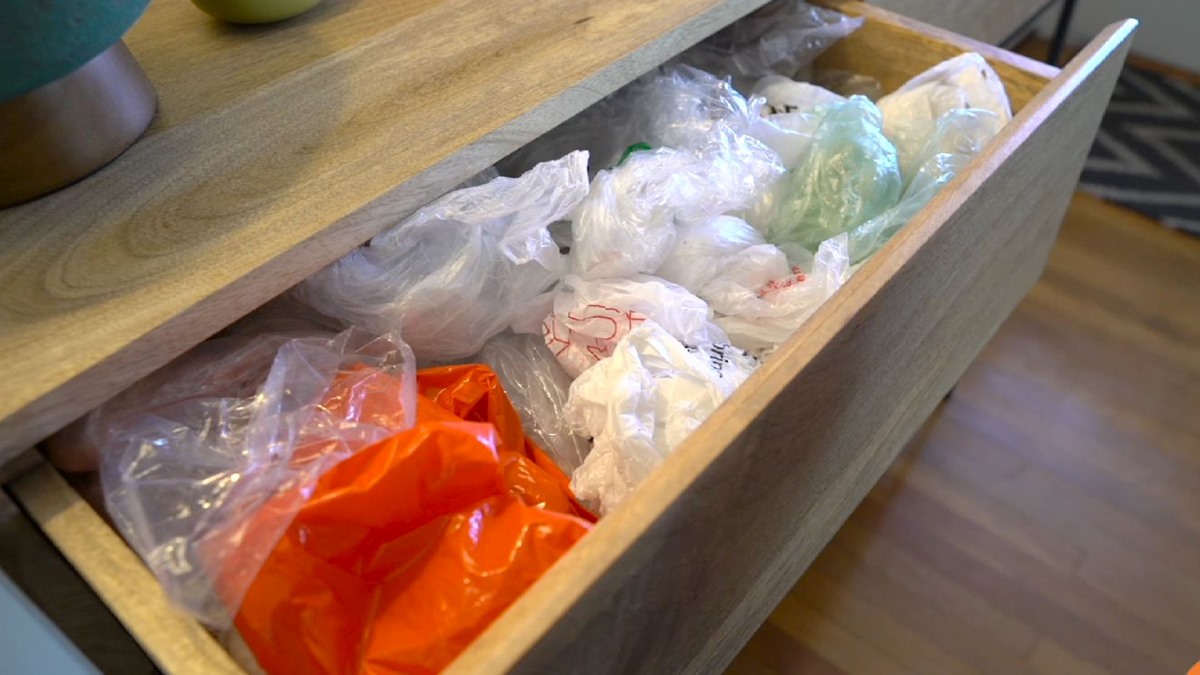
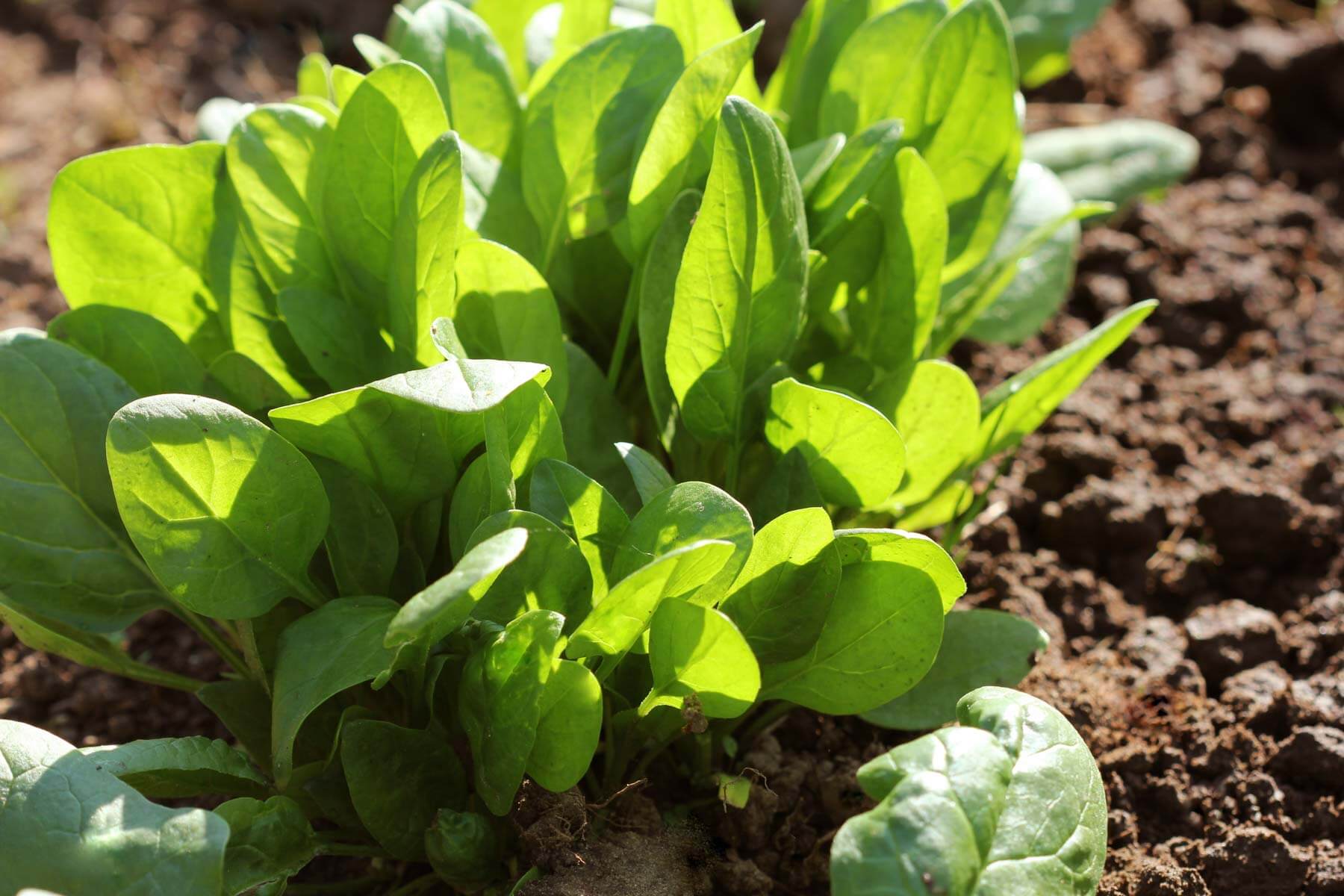


0 thoughts on “How To Store Bagged Spinach”